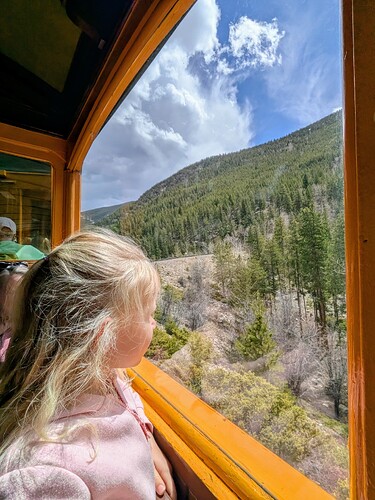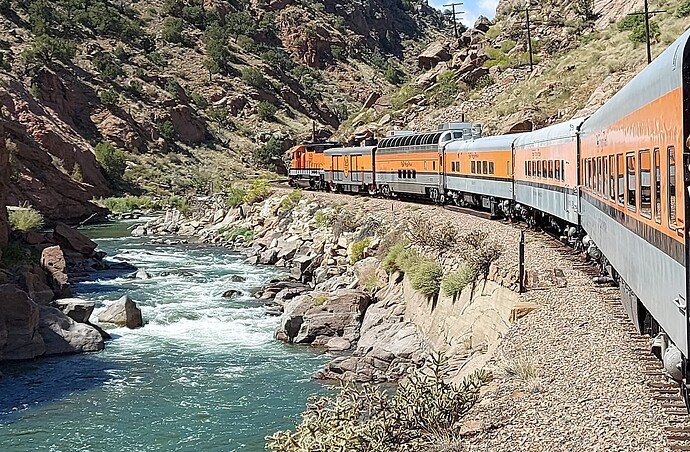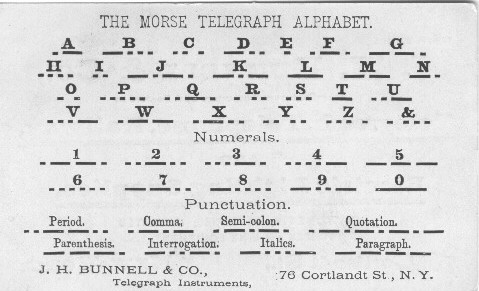Today with my granddaughter on the Georgetown, Colorado, historic railroad ride the conductor explained the Morse code patterns of the train whistles. This included the “Q” whistle – two long, one short, one long – to signal that our train had the right-of-way. This code reportedly dates back to English trains carrying the Queen. There are other similar Morse codes adapted for train whistle messages.
So next rime that you hear a train whistle, de-code it !! Great trivia question.
Stay well & 73!
Mike, WB2FUV
18 Likes
This (or relatedly) was on the most recent episode of ham radio workbench podcast.
There are a couple of links in the show notes and they talked about people that used to work as translators going from railroad morse to shipping (international) morse. Not sure what the situation was but there we go.
2 Likes
That’s a great trip, Mike. We took it a couple of years ago.
Didn’t, however, learn anything about Morse code.
2 Likes
Slight problem. Nearly half the characters used in Railway Morse differ from International Morse. The Railway’s in the mid 1800’s were cutting edge technology and used Vails original Morse. International Morse which we use was a later development.
4 Likes
A variation on Railway Morse …
My late ham radio mentor did his National Service in 1953 out in the Far East. He was trained by the RAF as radio operator.
Located at fixed base, his duties included maintaining contact, using HF CW, with moving trains carrying materiel and troops around the country, mainly at night to avoid enemy attack.
These days, I guess you could use a 2m handie on the LNER Express from Edinburgh to King’s Cross; though good fun only if you manage to work a SOTA summit 
73 Dave
2 Likes
Hi Mike, It’s interesting the railroad engineers sent “Q” in international code. I’ve heard it many times. Never thought about it much. But the actual railroad telegraphers used “American” morse, as did Western Union telegraphers. I worked for Western Union for a lot of years as a maintainer (later we were called “technicians”,“service reps”, etc.) We were still using the wires along the railroad for a few live circuits up into the 1970s and I’d drop into railroad depots and there were still a few telegraph operators still using morse with key & sounder at that time. It was amazing! I used that code (I barely knew it) to communicate to my “wire chief” when checking wires when I was out testing for trouble. I had a “KOB” (key on board) with clip leads on it to connect myself to a spare wire that we used for our work.
Here is a picture of the American Morse, as you hams can see, there are quite a few differences from the international code we use on the air.
73, John, K6YK
5 Likes


